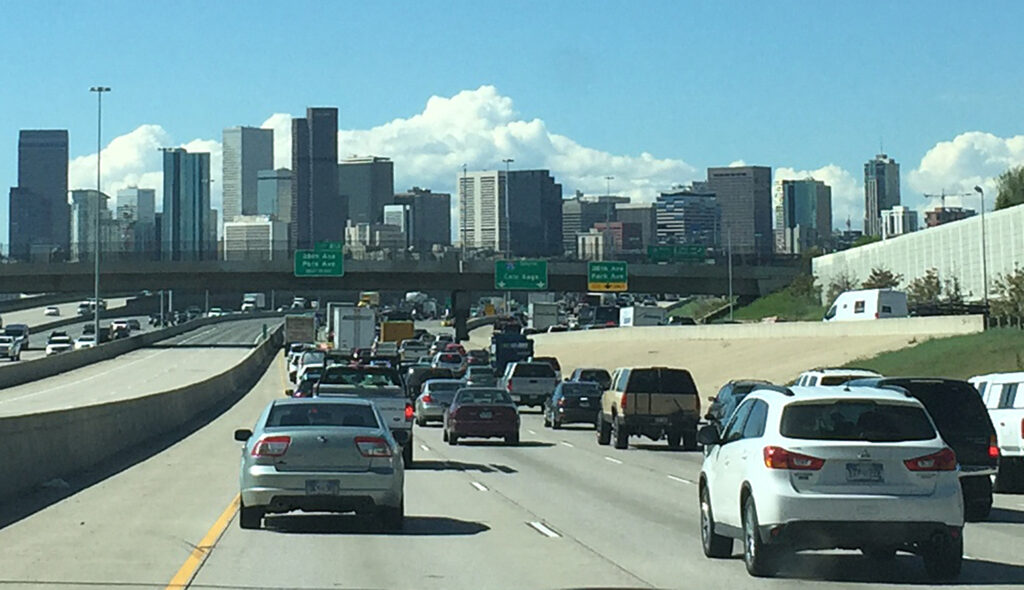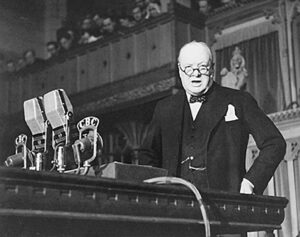AS WE WAIT OUT THE ENDLESS VARIANTS OF THE MOST RECENT PANDEMIC, I FIND MYSELF CONSIDERING THE VARIOUS forces that brought us to this point, the reasons SARS-CoV-2 got its start in humans. I’m not interested in laying blame; I just want to figure out what this might mean for the future.
This is by no means the first time a pathogen has found its way out of another animal host into people. Smallpox, tuberculosis, malaria, measles, and cholera all began as pathogens in other animals, probably spreading to humans in the early phases of animal domestication and herding.[i] The infamous black death, the plague that haunted Europe off and on for almost 500 years, probably got its start in a Chinese rat 2,000 years ago.[ii] The virulent “Spanish” influenza, responsible for at least 50 million deaths worldwide in 1918, probably arose in China, not Spain, and may have been brought to Europe through Canada in a force of 96,000 Chinese workers who eventually worked behind the Allied lines along the Western Front in Europe.[iii] Analysis of the strain’s RNA suggests that it originally evolved in birds, although there is reason to believe it may have spent some time in humans before the outbreak.[iv]
As I wonder why these diseases have been so catastrophic in people, several contributing factors come to mind. First, our immune systems tend to be ambushed by a pathogen that suddenly jumps across the physiological barrier that separates us from other animals. We haven’t evolved with the disease or been exposed to similar bugs that might prepare us to fight it, so it might make us sicker.
The chances that a pathogen in another species will adapt to humanity probably increase as the amount of contact between people and animals increases, which may well be driven by the sheer number of people. With any communicable disease, it’s clear that the potential for spread increases with the number of people exposed and the density of the human population.
Finally, the likelihood of spread increases with the amount of traveling people do. The plague almost certainly came to Europe as a result of trade along the Great Silk Road. The 1918 influenza may have been carried from Asia across Canada to western Europe. And it’s pretty clear that SARS-CoV-2 arrived in the United States by commercial jet. The one salient exception to this general rule could be a virus carried by a migratory bird, which is why, when the avian influenza virus H5N1 got loose in Asia in the late 1990s, authorities in North America sampled wild ducks and geese that might have mixed with Asian waterfowl in the Arctic.
A theme arises from these observations: more people mean more risk of pandemic disease. In Guns, Germs and Steel, author Jared Diamond offers a brilliant analysis of the difference between diseases that are sustained in small, isolated groups of people and what he calls “crowd” diseases that will flare up, then disappear in small populations, simply because all the members of the group either die or develop immunity. From an evolutionary point of view, a crowd disease that finds a large group of people can “afford” to be more aggressive and immediately deadly because there are always new victims to infect.[v]
These epidemiological realities are strangely related to another human malady: climate change. Like the crowd diseases, climate change is ultimately caused by large populations of humans. Carbon dioxide and other greenhouse gases all pass through cycles of varying lengths, which means that the planet can absorb a certain amount of them without changing the acidity of the ocean or the heat-trapping properties of the atmosphere. The problem become critical when too many of us release to much greenhouse gas.
In this, as in so many physical and biological processes, everything depends on rate. If that’s hard to grasp, consider this thought experiment: You’re in an airplane 10,000 feet above the ground. The plane catches fire, and you have to jump. Do you want a parachute? You’ll avoid the fire and get to the ground either way, but the outcomes of the two escapes are quite different. It’s all a matter of rate.
Clearly, there are a couple of ways to increase the rate at which we release greenhouse gases— each person can release more or we can add more people doing the releasing. Or a combination of the two. Lately, the amount of CO2 we’re been releasing around the world, per person, has gone up a little— about seventeen percent between 1990 and 2018. Here in the United States, the per-person release has actually dropped about twenty-seven percent in that time.
 Trouble is, the number of people keeps going up. So, between 1990 and 2018, total amount of CO2 in the atmosphere has increased by sixty-seven percent.[vi]
Trouble is, the number of people keeps going up. So, between 1990 and 2018, total amount of CO2 in the atmosphere has increased by sixty-seven percent.[vi]
Climate change resembles SARS-CoV-2 in one particularly disturbing way: Symptoms of the disease don’t start to appear until some time after the patient is infected. In the case of SARS-CoV-2, the gap between infection and first symptoms may be as much as fourteen days.[vii] With climate, the gap between infection and illness is much, much longer.
A molecule of carbon dioxide, the most common greenhouse gas, released into the air today may linger for from five to 200 years. A molecule of methane, for twelve years. A molecule of N2O, nitrous oxide, for 114 years.[viii] So, from the time I burn a gallon of gas, the resulting greenhouse gases could hang around for a century . . . or more.
It’s increasingly clear that the SARS, MERS, and SARS-CoV-2 outbreaks are harbingers of a new age of pandemic disease in the world. Some may be less dangerous, some more, but most epidemiologists expect that, some awful year, a raging killer could emerge to rival the 1918 flu and the Black Death. I think it’s fair to say that this new age of disease is largely driven by the size of the world’s population and the growing interdependence that arises from our increasing numbers. Can our medical technology keep up with the evolutionary processes that deliver new pathogens to our doors more and more rapidly? I guess we’ll find out.
And, as this biological threat stalks us, we face the certainty of a deteriorating climate with all its attendant problems— drought, floods, wildfire, monster storms, desertification. We’ve already passed the first thresholds science warned us about, and we’re already seeing the first effects that were forecast, from loss of glacial ice, declines in supplies of freshwater, loss of crops, to catastrophic rain and wind, killer tornados, oceans turning to acid. Like pandemic disease, the problem of climate change is, to a large degree, a problem of too many people.
As an ecologist by training, I’m deeply pessimistic about the future of the system we’ve built for ourselves, the blind embrace of technologies that have allowed four centuries of unbridled population growth. In the last thirty years, we’ve refused to look for other ways to power our civilization, which means we’ve absolutely locked in an increase in global temperature whose consequences will be profound and entirely negative. And we seem uninterested in spending the money or changing the way we live to minimize the risk of pandemic disease. Both of these problems stem, in large measure, from our inability to control our drive to procreate.
Our chance for limiting ourselves to a sustainable number probably passed us sometime in the 1920s, when human population rose beyond two billion souls. It took less than fifty years for that number to double, and even as the rate of population growth begins to slow, we’re just about ready to double it again. Demographers estimate that, if current trends continue, world population will plateau around the year 2100 just short of 11 billion.
Near the end of my orals for a master’s degree, an eminent phytoecologist on my committee asked me to estimate the carrying capacity of the planet for the human species. Setting aside my broader philosophical views on the question, I talked science for a while— net energy conversion efficiencies from one trophic level to another and finally decided that, if everyone became vegetarians, we could probably support about six billion people with a much more modest lifestyle than the ones we were enjoying.
“Would you believe two billion?” he replied.
At the time, I certainly did. Now, with the marvelous climate that has sustained us for the last 10,000 years steadily deteriorating, I’d say his estimate was high.
We’re caught in the jaws of a vise, tightened inexorably by the underlying problem that we seem incapable of solving— too many people.
As the symptoms become ever more debilitating, many of the people who are most concerned about responding worry that the general public is either unaware of the threats or so informed that they are paralyzed by despair. Hope is what should be communicated, they say; otherwise, humanity will just surrender to the inevitable and fade away to nothing.
I find that demeaning. It impugns the innate toughness and perseverance that have been the wellspring of success for the human animal ever since we came down out of the trees. It ignores a history of self-sacrifice and tenacity that has followed us right down to the present hour.
 I’m reminded of Winston Churchill’s famous speech in the darkest hours of 1940, with Europe overrun, London in the process of being reduced to rubble, no sign of help from America, and the most powerful army in the history of the world massing its boats twenty miles from Dover. Three days after he became prime minister, Churchill addressed Parliament:
I’m reminded of Winston Churchill’s famous speech in the darkest hours of 1940, with Europe overrun, London in the process of being reduced to rubble, no sign of help from America, and the most powerful army in the history of the world massing its boats twenty miles from Dover. Three days after he became prime minister, Churchill addressed Parliament:
“I would say to the House, as I said to those who have joined this government: ‘I have nothing to offer but blood, toil, tears, and sweat.’” Then he added, “You ask, what is our aim? I can answer in one word: It is victory, victory at all cost, victory in spite of all terror, victory, however long and hard the road may be; for without victory, there is no survival. Let that be realized; no survival for the British Empire, no survival for all that the British Empire has stood for, no survival for the urge and impulse of the ages, that man will move forward toward its goal.”
So said Winston Churchill in a moment that must have seemed beyond hope.
Was the threat the Free World faced in those dark days worse than those we face today? I suppose that assessment depends on one’s point of view. Certainly, that threat was clearer, easier to understand than ours. And the solution, while it seemed almost impossible to achieve at the time, was relatively straightforward and called on some our most dependable traits as a species— the instinct to protect our homes and families along with our capacity for uniting against an easily recognized common enemy and our great talent for making new tools. As strange as it seems, that was a luxury— the situation played to our strengths.
This time, the enemies have no faces. They don’t live beyond a wall in another nation but here, among us. Their campaign isn’t waged on a human time scale. They can’t be negotiated with or threatened into an early surrender. Their weapons are subtle but almost unimaginably powerful, channeling, as they do, the forces of physics and organic evolution rather than man-made technologies. For all these reasons, many people are not yet convinced they even exist, which makes a coherent response doubly difficult to adopt. For all these reasons, I think the circumstances that face us as a species may be more dire today than they have been at any other time in the 200,000 years since we became human.
I very much doubt that the doomsayers who predict the extinction of the human species will turn out to be right. Even in the worst case, there will be enclaves of climate, soil, and vegetation that will support people. But the number of people will be no more than a fraction of current world population, and the process that will reduce the number of people we have to the number that new planet can support will be horrendous, even in the best case.
Our efforts to control COVID brought us startlingly near to economic breakdown as production and transport of basic foodstuffs slowed to a crawl and large sectors of the American economy ground to a halt, putting tens of thousands of wage earners and entrepreneurs on welfare. And that with a pathogen that was really fairly benign. It doesn’t take much imagination to conceive of a pandemic that is more communicable and far more dangerous than COVID— I wonder whether the fragile economic system that supports us all will survive such a challenge.
As large areas of the earth become uninhabitable, waves of climate refugees will come looking for food and shelter. We’ve watched the strain such emigration has placed on Europe in the last twenty years— can our economic and political systems survive a far more drastic increase in that flow? And, if these systems fail under stress, our capacity to help each other will be crippled, and the subsequent human suffering will be further magnified.
Through generations of ignorance and neglect, we have put ourselves in the vise. It is possible that, for the majority of us, for most of our children and even grandchildren, there is no way out. It’s hard to say whether there is even a way through, at least as any sort of civilization. It’s critical that we grasp the reality of the situation we face. It shouldn’t be exaggerated, but neither should it be softened or camouflaged to spare the feelings of people who simply don’t want to face it. I think we’re beyond hope.
And that may be for the best. Hope is an overrated emotion— puerile, feeble, without intention or resolve. We need to rediscover the steel in our souls, the sand in our craws. We may well face the greatest challenge in the history of humanity. We need to get to work, regardless of the chances of success, and we desperately need to face the truth about the trouble we face, no matter how disturbing it may be to tender sensibilities. As for hope— nurturing it simply wastes time we don’t have. We should leave it behind.
——————
[i] Diamond, Jared, 1997. Guns, Germs and Steel: The Fates of Human Societies. W.W. Norton and Company, New York, NY. p.196.
[ii] Nordqvist, Christian, 2010. Origins of the Black Death traced back to China, gene sequencing has revealed. Medical News Today. https://www.medicalnewstoday.com/articles/206309#1. Accessed March 23, 2020.
[iii] Vergano, Dan, 2014. 1918 flu pandemic that killed 50 million originated in China, historians say. National Geographic, January 24, 2014. https://www.nationalgeographic.com/news/2014/1/140123-spanish-flu-1918-china-origins-pandemic-science-health/. Accessed March 23, 2020.
[iv] Reid, Ann H., et al, 1999. Origin and evolution of the 1918 “Spanish” influenza hemagglutin gene. Proceedings of the National Academis of Science 96(4): 1651-1656. https://www.pnas.org/content/96/4/1651?panels_ajax_tab_tab=jnl_pnas_tab_info&panels_ajax_tab_trigger=tab-article-info. Accessed March 23, 2020.
[v] Diamond, op cit, 195 ff.
[vi] Crippa, M., et al, 2019. Fossil CO2 and GHG emissions of all world countries: 2019 report. JRC Science for Policy Report. https://op.europa.eu/en/publication-detail/-/publication/9d09ccd1-e0dd-11e9-9c4e-01aa75ed71a1/language-en
[vii] Centers for Disease Control, nd. Coronoavirus Disease 2019 (COVID-19). Symptoms. https://www.cdc.gov/coronavirus/2019-ncov/symptoms-testing/symptoms.html. Accessed March 23, 2020.
[viii] International Panel of Climate Change, Working Group I. The Scientific Basis.

Leave a Reply
You must be logged in to post a comment.